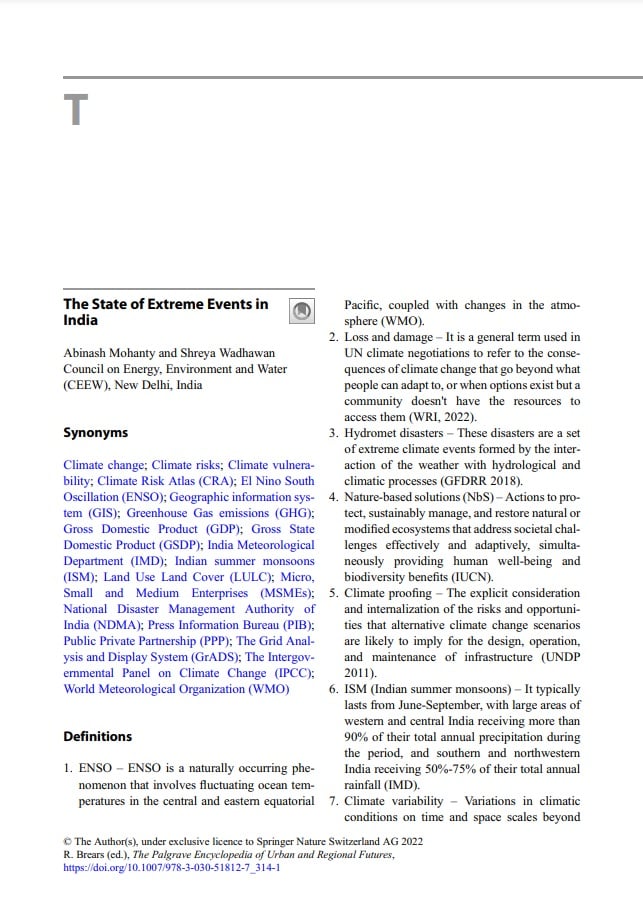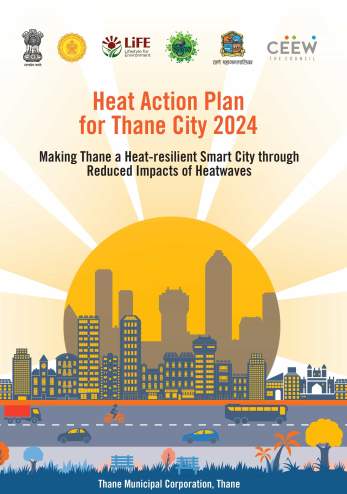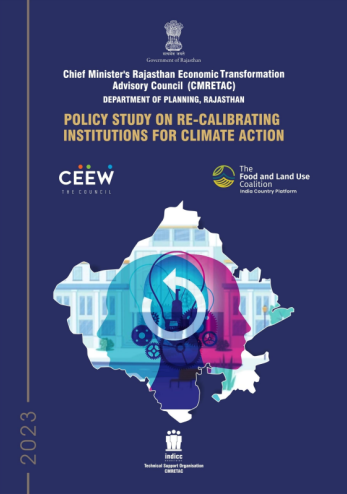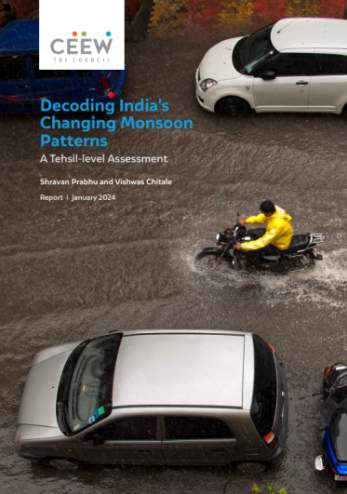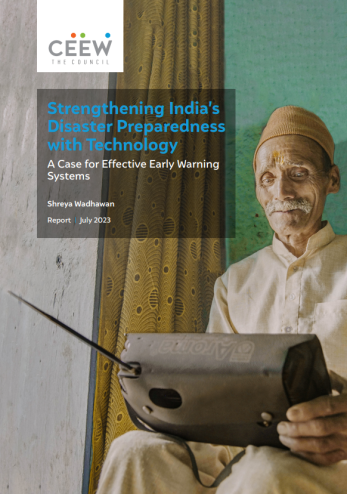Other Publications
The State of Extreme Events in India
Abinash Mohanty and Shreya Wadhawan
August 2022 | Climate Resilience
Suggested Citation: Mohanty, Abinash, and Shreya Wadhawan. 2022. The State of Extreme Events in India. Under exclusive licence to Springer Nature Switzerland AG 2022 R. Brears (ed.), The Palgrave Encyclopedia of Urban and Regional Futures. https://doi.org/10.1007/978-3-030-51812-7_314-1
Overview
With India being the seventh most climate vulnerable country globally (Germanwatch 2020), this chapter attempts to investigate some of the climate change drivers and enumerate the state of extreme events across various climatic zones and sectors. The chapter undermines the state of extreme events by identifying the 10 most exposed (hotspot) states, the landscape-based drivers of climate change and the likelihood of sectors and populations being at risk. Further, it delves upon some tailor-made recommendations that can climate-proof India’s economic sectors.
Source: Authors' Analysis
Key Highlights:
- The analysis suggests that the eastern zone of India is the most exposed to extreme flood events, closely followed by the northeastern and southern zones of India. Bihar and Assam are the most exposed to extreme flood events.
- More than 52 per cent of the districts in the top ten flood hotspot states are showcasing a swapping trend. i.e., traditional flood-prone areas are becoming drought-prone and vice versa.
- There has been a two-fold surge in extreme flood events across the top ten states in the last five decades (1970-2019).
- Approximately 93 per cent of the districts in the top ten hot spot states that are prone to extreme droughts have undergone significant land-use surface changes. The land-surface changes have triggered extreme droughts in recent decades. Uttar Pradesh, Maharashtra, and Karnataka are the most exposed to extreme drought events in India.
- The pentad decadal analysis suggests that the eastern zone of India is highly exposed to extreme cyclone events followed by southern and western zones.
- There has been a four-fold increase in extreme cyclone events across the Indian states, whereas Andhra Pradesh, Maharashtra, and Bihar have registered a two-fold increase in extreme cyclone events, and Odisha alone has registered a four-fold surge in extreme cyclone events.
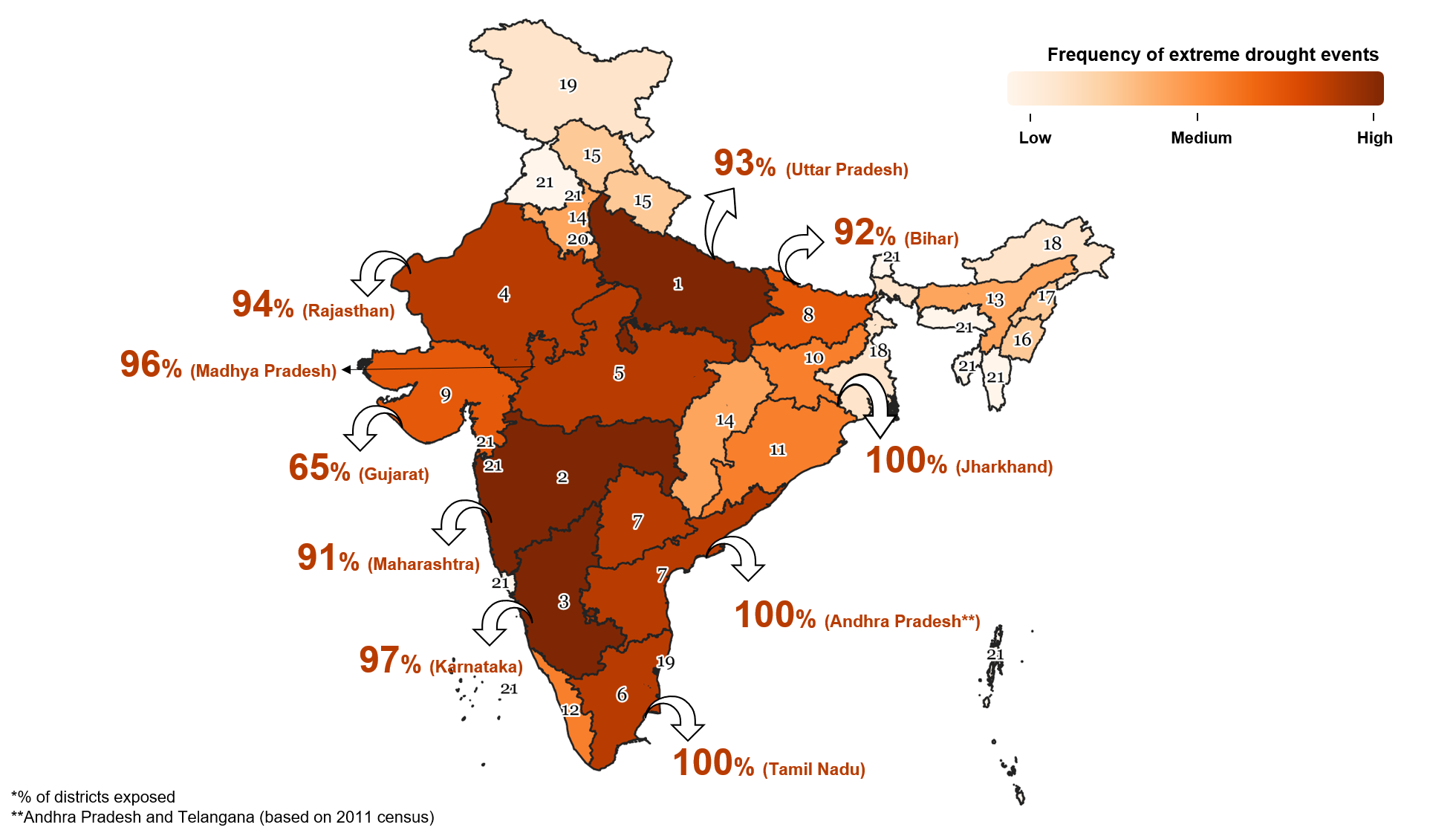
Source: Authors' Analysis
Key Recommendations:
- Build India’s resilience through improved public early warnings. India has improved its early warning systems and public warning systems, but still, gaps need to be addressed through science and an evidence-based approach. An effective impact-based early warning system can prepare lives and livelihoods and design infrastructures that can sustain climate extremities.
- Investing in nature-based solutions. Including nature-based infrastructure like wetlands, mangroves, and forest ecosystems, among others, under the ambit of critical infrastructure can make India’s cities and villages more climate resilient.
- Mainstream climate-responsive risk insurance to fast-track the implementation of climate-resilient infrastructures and mobilise both public and private investments.
- Climate-proof urban planning. Climate action plans at the municipal level can help integrate, and implement granular climate risk assessments, improve critical infrastructure, and promote urban policies for a better quality of life against both extreme and slow onset events.
Promoting impact-based early warning systems can insulate lives and livelihoods and ensure climate-proofing of the planned and built-in infrastructures that can withstand climate extremities.




